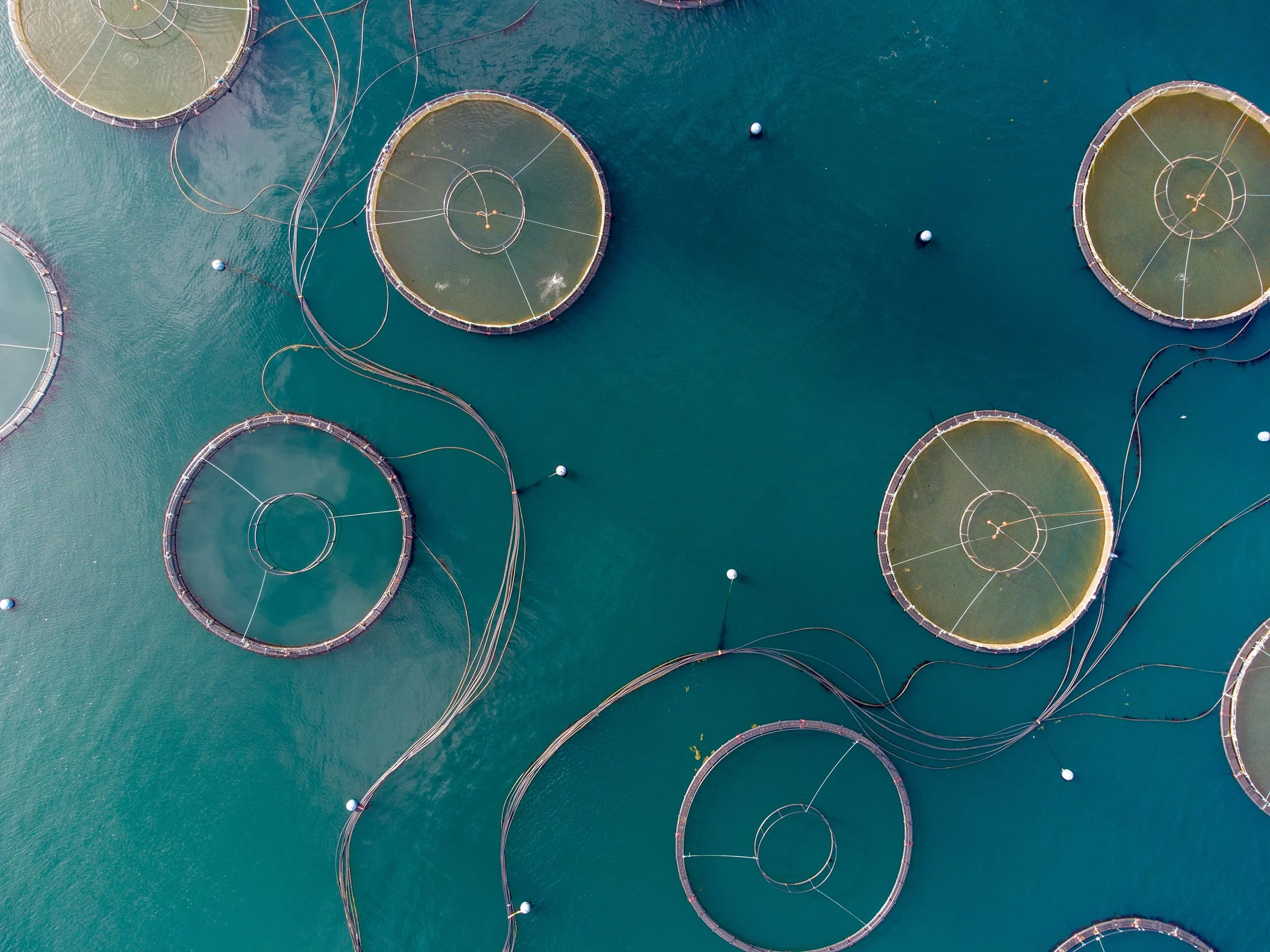The Problem With The Fishing Industry
The Fishing Industry is largely unregulated and is removing marine life from the oceans faster than it can be replenished.
Recent data shows that we are draining our oceans of seafood, and if overfishing does not stop, the world will run out of seafood in 2048. Currently, nearly 80% of the fisheries are already exploited, depleted and at risk of collapse.
The pressing issue of overfishing is not often talked about and is widely misunderstood. It is more important now than ever to reconsider our need to consume seafood and reduce or eliminate seafood supplied by large-scale fishing companies destroying the oceans.
The Fishing Industry
Perhaps not everybody knows, but the ocean covers 71% of the earth's surface. Fish are consumed in every region of the world. Overfishing practices could lead to species extinction and, therefore, a complete alteration of their habitats.
The fishing industry has expanded enormously in the last century, and illegal fishing practices are no exception. In many cases, consumers can’t know whether the fish they buy comes from legal or illegal practices.
Furthermore, commercial fleets are going far deeper down the food chain for viable catches due to a decrease in certain species. The term fishing knows this down the food web, causing a chain reaction that further distress the ocean’s biological systems.
Overfishing leads to species extinction. Those that cannot reproduce due to the high fishing rates of this industry eventually disappear or become severely threatened. In addition, 40% of the animals caught in the ocean are non-target species. This means they end up dead or injured in the sea and are left to die.
Overfishing & Climate Change
The ocean is the main carbon sink in the world. Fish play a leading role in this capture since their vertical movement causes surface carbon to go to the ocean’s bottom and stay stored there. Most animals and plants responsible for carbon capture are affected when we threaten these ecosystems.
Fisheries have depleted most ocean fish stocks accountable for this phenomenon, affecting the carbon sequestration process.
Also, bottom trawling practices cause significant damage to deep marine sediments, and they are responsible for releasing vast amounts of CO2 from ocean soils.
In 2019, the release of CO2 into the atmosphere caused by bottom trawling was more than the entire CO2 released by global flight traffic.
Fishing Techniques
Various fishing techniques have their own set of problems. These are considered unsustainable fishing methods used to catch large quantities of fish in a short period of time.
Bottom Trawling
Towing a trawl (fishing net) over a large section at the bottom of the ocean to catch massive amounts of fish also catches bycatch. This is an incredibly harmful practice and one of the companies' most destructive methods of catching fish.
Blast Fishing
Bombs of dynamite are dropped into the water to kill the fish and then skimmed from the water's surface. One blast can kill up to 400kg of fish at a time and is not only a high-risk practice for marine life and the reefs but also for the fisherman.
Cyanide Fishing
A method where a cyanide mixture is sprayed into an area to stun the fish and although it is illegal in most regions the practice is still used in turn damaging the surrounding coral reefs.
Muro-Ami
A method used across regions of Southeast Asia where heavy blocks are suspended by cranes and dropped repeatedly down on the reefs to break them and scare out the fish, which are then caught in a net. This has done irreversible damage to many of the reefs.
Fish Farming
Farmed fish and marine life production is expanding, especially in destinations such as China, India, Indonesia, Vietnam, Bangladesh, Egypt, Norway and Chile. Just because farmed fishing is done within a controlled environment does not mean the process is sustainable.
Fish farming is where fish and other kinds of seafood are purposely raised in enclosures for food production. The fish are kept in unnatural surroundings with limited space to move freely. Since the animals are retained in small spaces, aquaculture practices are very vulnerable to infectious diseases with high mortality rates. On the other hand, vast amounts of waste are generated during farming and food production for these species.
Research shows that in 2018 inland aquaculture (rivers, lakes, and fish farms) produced a staggering 51.3 million tonnes of aquatic marine life, accounting for over 60% of global farmed fish production.
Final Thoughts
The fishing industry is largely unregulated, and the impact on our ocean ecosystems is devastating. We are removing more fish than ever before.
Eliminating seafood from your diet will allow these larger, threatened fish species to recover.
No matter the technique used, fish are being taken from the ocean rapidly; thus, their habitat is altered. Today, the situation is critical. So any fishing practice, as sustainable as it may be, will contribute to the problem of overfishing.
If you still eat fish, support local fishing businesses that avoid practices like bottom trawling and look for sustainable or wild-caught fish. According to the Marine Conservations Society, you will want to avoid bluefin tuna, swordfish and eel as these stocks are all too vulnerable.
Fishing and marine conservation are deeply connected. If you are concerned about the ocean, marine life, plastic waste, coral reefs and the planet's future, stopping your seafood consumption should be your first step. The way we choose to spend our money is the most powerful message we have.


